Fotos / Sons
What
Tribo ScutelleriniObservador
russellcummingDescrição
Base of Mt Whitfield.
On Excoecaria agallocha.
Fotos / Sons
Observador
ramaplaDescrição
@mangrovewatch Crabs found around the house and yard after flooding event from ex cyclone Jasper no.6
Fotos / Sons
What
Género ParasesarmaObservador
ramaplaDescrição
@mangrovewatch Crabs found around the house and yard after flooding event from ex cyclone Jasper no.5
Fotos / Sons
Observador
ramaplaDescrição
@mangrovewatch Crabs found around the house and yard after flooding event from ex cyclone Jasper no.4
Fotos / Sons
Observador
ramaplaDescrição
@mangrovewatch Crabs found around the house and yard after flooding event from ex cyclone Jasper no.2
Fotos / Sons
What
Avicennia marinaObservador
goomburrup_aboriginal_corpDescrição
Images 1,2 showing Mangrove fruiting , images 3,4 showing young trees growing along shoreline.
Leschenault Estuary.
Djilba / early spring
Fotos / Sons
What
Avicennia marinaObservador
deans_beaverDescrição
Images of Avicenna marina at Leschenault Estuary, including images showing Fruiting, during Winter / Mookaroo , through early Spring / Djilba (Noongar bonar) .
Trees showing higher density of fruiting appear to have more sunlight exposure.
Fruits varying in size and maturity, non-edible and contain Cotyledon leaves.
Other observations at this time showing Fruiting and Mature Fruits also available for viewing and reference https://www.inaturalist.org/observations/176412256
https://www.inaturalist.org/observations/176410788
Fotos / Sons
What
Avicennia marinaObservador
deans_beaverDescrição
Images showing Mangroves at Leschenault Estuary Mangrove Boardwalk , including images of Fruiting occurring during Winter / Mookaroo , through to early Spring / Djilba (Noongar Bonar).
Fruiting density appears to vary throughout area , trees showing higher fruiting density seem to get more midday afternopn evening sunlight exposure. Fruits vary from newer smaller fruits to large mature fruits. Fruits are non-edible and contain cotyledon leaves.
Other observation showing images of mature fruits are available for reference and viewing https://www.inaturalist.org/observations/176412256
https://www.inaturalist.org/observations/176411355
Fotos / Sons
What
Género PetrolisthesObservador
matthew_connorsDescrição
Does anyone know how to ID these??
Fotos / Sons
What
Parasesarma lividumObservador
matthew_connorsDescrição

Okay, yes, it's that time. What is this? Well it's a grapsoid. And we can rule out some obvious families too. It's not a gecarcinid, a leptograpsodid, a percnid, or a plagusiid. I think it's probably a grapsid but I don't know all that much about sesarmids and varunids so I will go through them too.
Let's look at the sesarmids - ALA lists 16 genera. Bresedium brevipes actually does look quite close, but the penultimate abdominal segment is a different shape (in males) and it lacks the little crests on the upper surface of the claw, near the base of the dactyl:

Chiromantes garfunkel is very cute but the wrong shape (and maybe only Christmas Island?):

Clistocoeloma merguiense is quite a different shape:

And C. villosum is similar:

Karstarma jacksoni is a long-legged cave-dwelling Christmas Island endemic:

Labuanium trapezoideum is also the wrong shape:
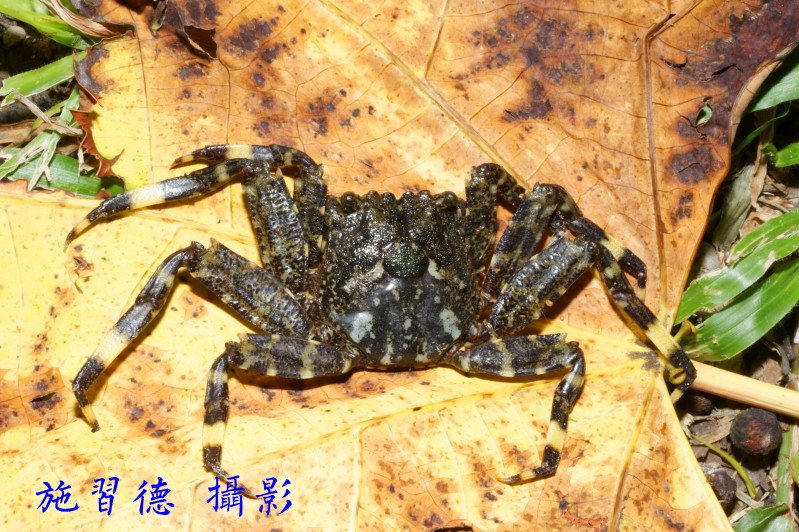
L. vitatum is similar and an island species as well:

Our three Leptarma species are quite similar to mine but lack the second spine behind the eyes and seem to have a different frons shape. B is L. lenzii, D is L. leptosoma, and G is L. moluccense:

Metasesarma obesum is also not correct:
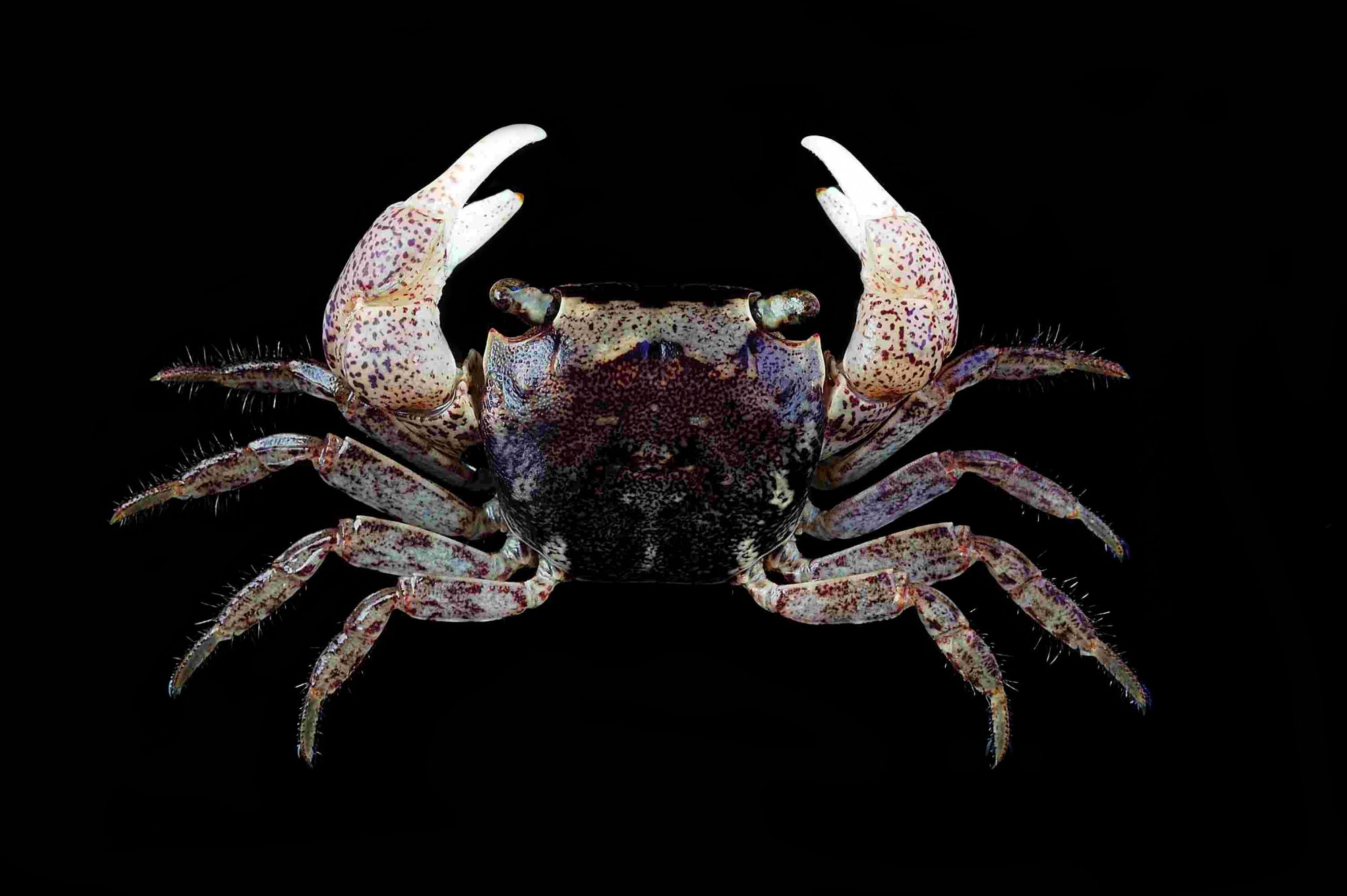
Our three Neosarmatium species are all much too thick and are the wrong colour and shape as well.
N. australiense:

N. fourmanoiri:

N. trispinosum:

Neosesarma hirsutus is similar in shape but is (usually) covered in clumps of hair, has smooth claws, and is only known from the NT:

N. rectipectinatum is similar but less hairy:

On to Parasesarma, of which there are a number of species. P. austrawati is very similar but is out of range (WA and NT only) so I am excluding it because I want to:

P. brevicristatum we supposedly have here on iNat:

although I cannot actually find anything outside of iNaturalist to back this up. I can't see anything to suggest it is wrong though. The males have very much larger and more regular tubercles on top of the dactyl, and indeed mine is a male so it is out:

And now we come across this nice key, which will be very helpful. It doesn't contain all of the species but it does contain some. The dactylar tubercles are not prominently rounded and there appear to be more than 9, so P. longicristatum is out:

There are fewer than 14 such tubercles (and they are not so nicely arranged) so it is also not P. darwinense:

P. lividum has the fixed finger short, and the dactylar tubercles irregular, and in fact it does seem to be a very good match for mine:

And in fact going by iNat sightings the colour is a very good match too:

So I think we may have a winner! But let's go through the others just to be sure.
P. messa has the fixed finger longer so it is out, and it also has all the tubercles low and indistinct (although certainly the colour is a pretty good match if iNat sightings are anything to go by):

That's it for the key, so onto other resources. P. gecko has only a single spine behind the eye:

P. gracilipes is the same:

P. hartogi has an interesting open claw:

P. holthuisi has regularly-shaped dactylar tubercles:

P. erythrodactylum has only a single pair of spines behind the eyes, and is quite a common and well-known species:
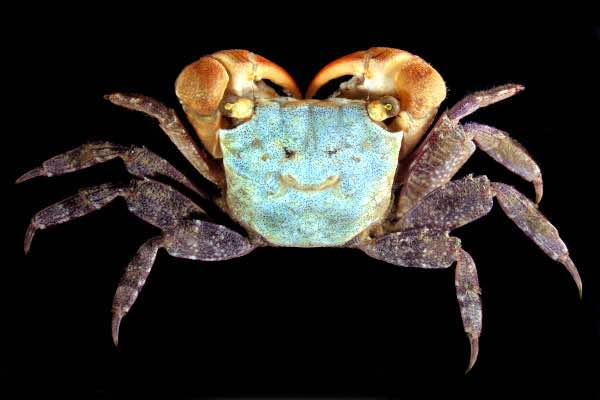
P. lenzii also has no spines and I'm not sure if it is known from the mainland anyway:

P. moluccense has only a few large tubercles on top of the dactyl (and has only one pair of spines):


And finally P. sigillatum also has only a single spine pair behind the eyes:

So that's it for Parasesarma at least, and I'm quite confident that mine is P. lividum. Buuuut while I'm here I may as well go through the rest of the sesarmids, just for you guys.
So, what about the remaining genera and species? ALA lists Perisesarma but with no species, and a quick glance at WoRMS suggests that all of the Australian species were moved to Parasesarma, so we shall move on.
Sarmatium crassum is too round:
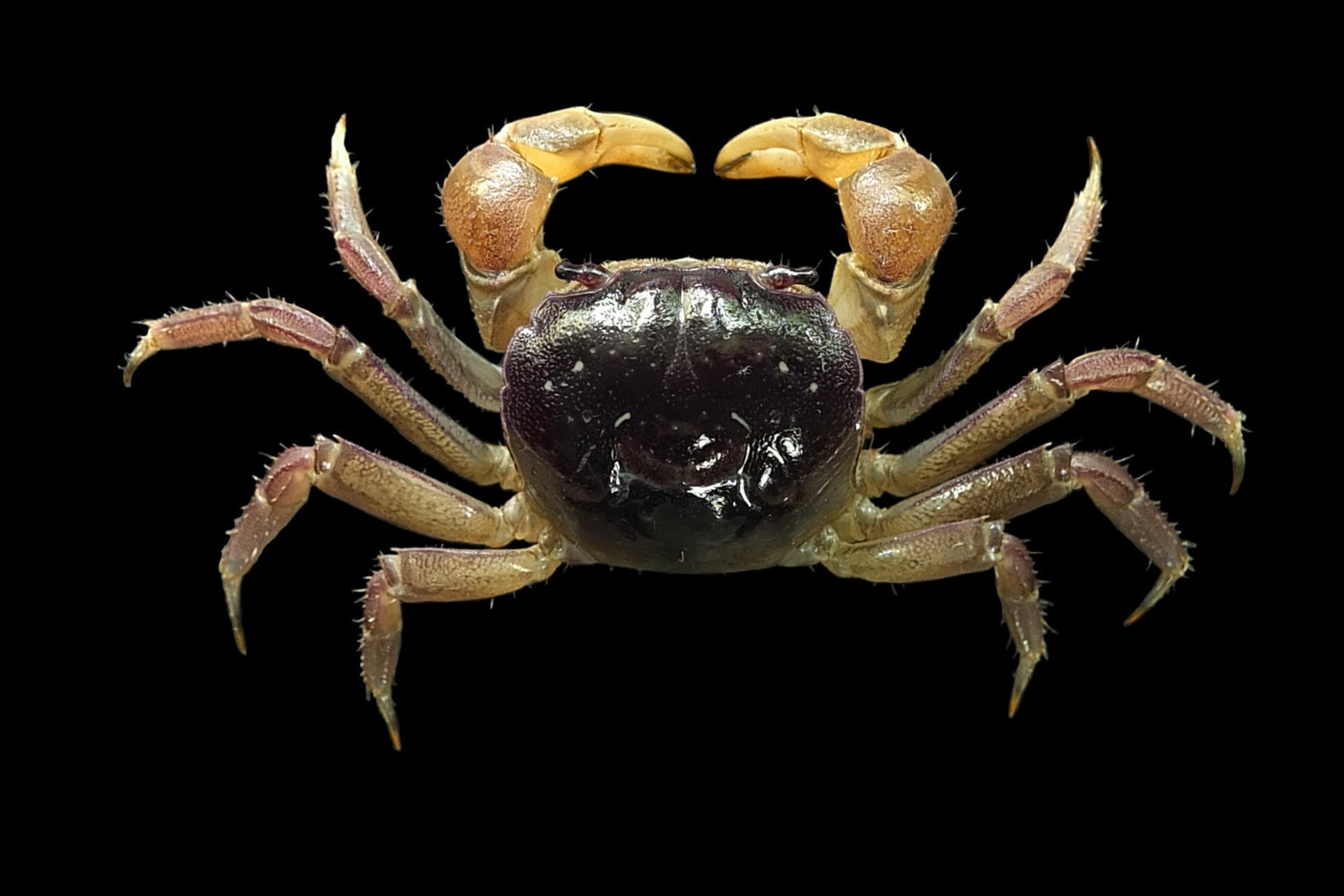
S. germaini is similarly round:

S. hegerli is of course the same:

As of course is S. unidentatus as well:

And you know what, while we're here, here's a key to Sarmatium species:

Selatium brockii has three spines on each side (although the third is small), but also the legs are too long and it has a prominent ridge on top of the propodus:
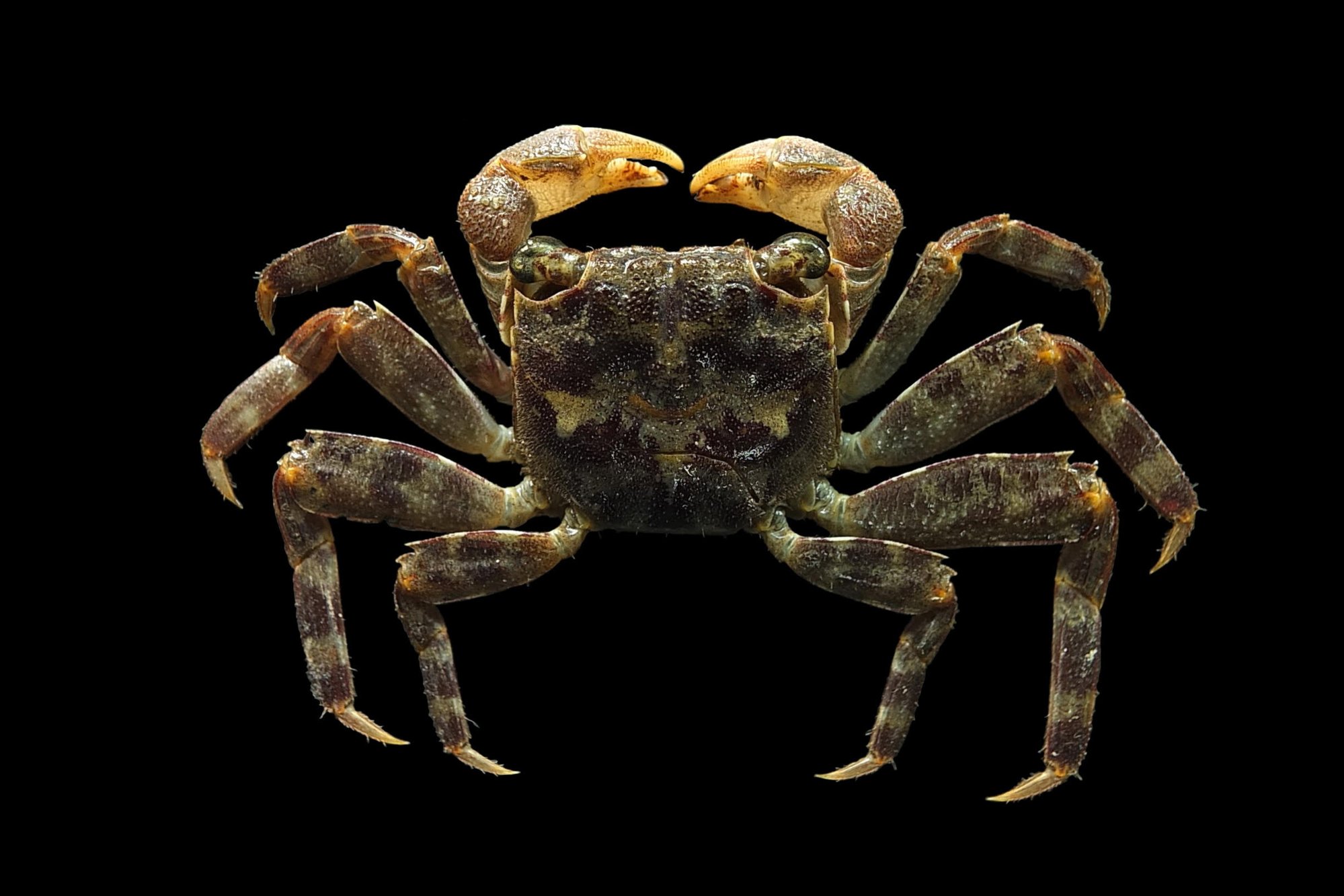
I cannot find an image of S. elongatus but this paper says that it also has three spines on each side.
Sesarmoides borneensis is a lomgboi (Figure A):

Look at the length of the third leg!

Sesarmops impressus is similar but the shape is off, the frons is not right, and the texture of the claws is very different:
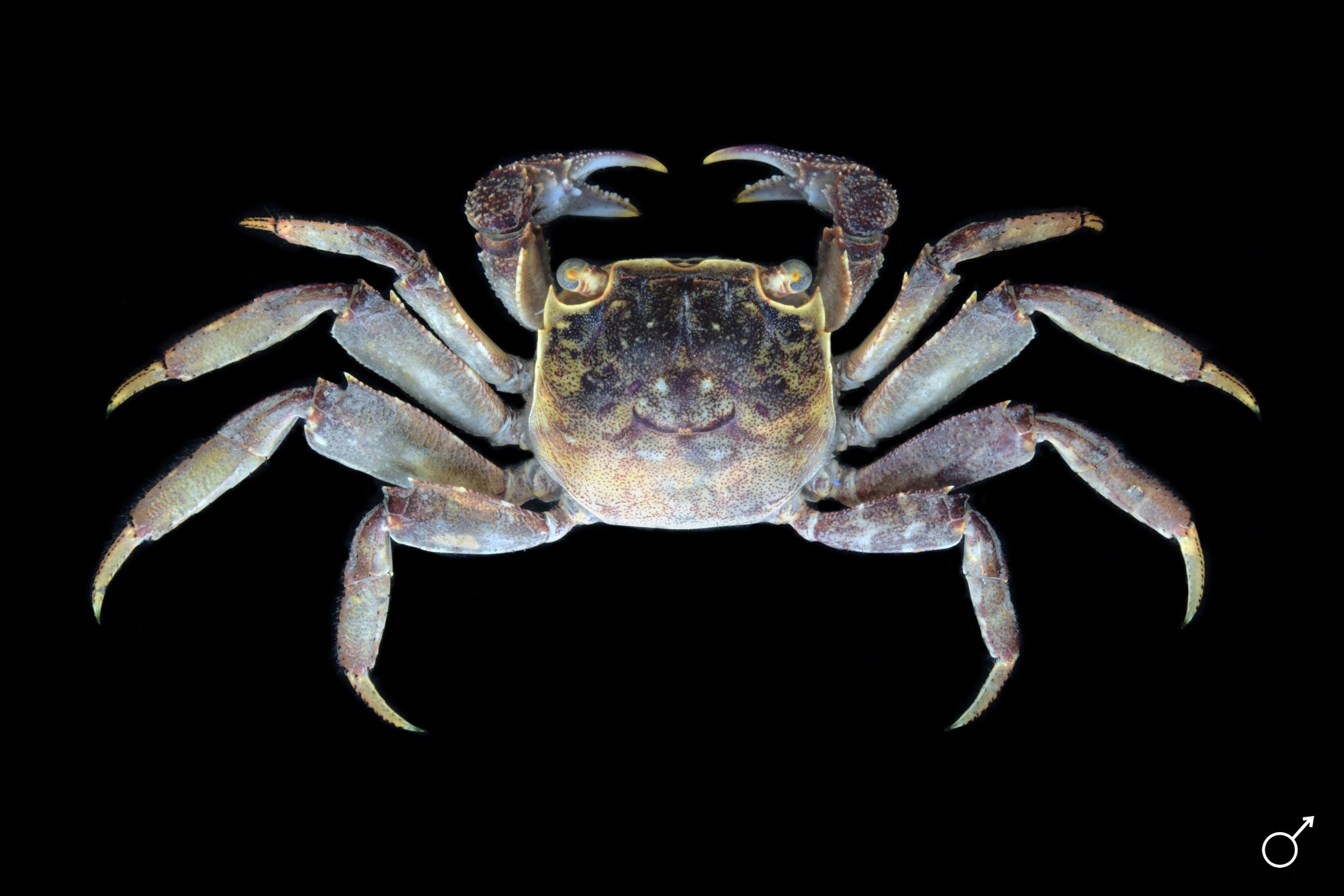
S. atrorubens is similarly different:

But according to the above link, neither of those species have actually been recorded from Australia (there are some erroneus records which I assume is why they are listed on ALA).
And last but not least, we have the good old Tioman Crab, Tiomanium indicum:

So that there is all the Australian sesarmids, and we have our ID: Parasesarma lividum! Some time I will go through the grapsids and varunids as well, because there are some issues I would like to get to the bottom of. One day. Maybe one day soon. Maybe.
The most important lesson we learnt here is that flipping crabs over for photographs is very very important
What
Spyridium globulosumObservador
aliciasmithDescrição
@mangrovewatch tells me this is anomalous for Bunbury, it is not a Grey Mangrove.






















